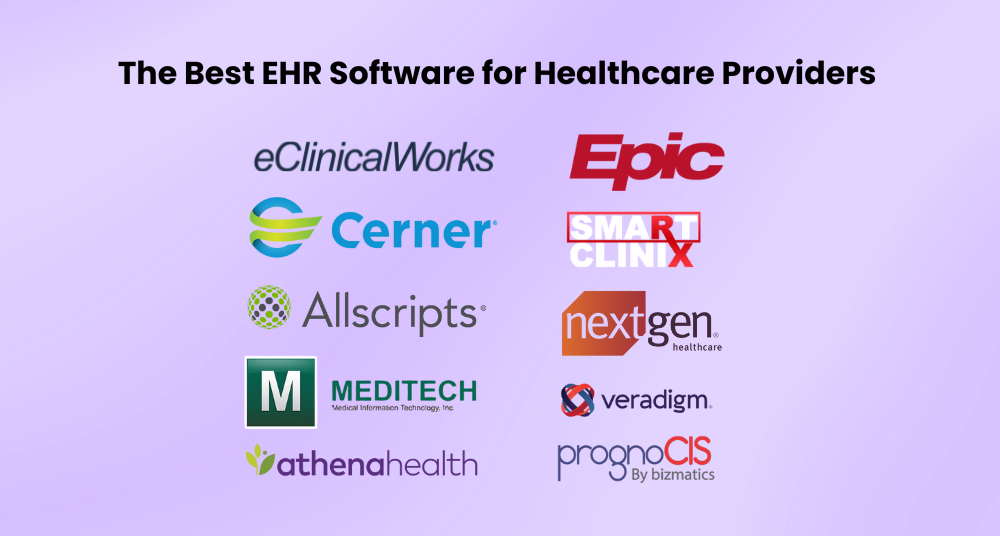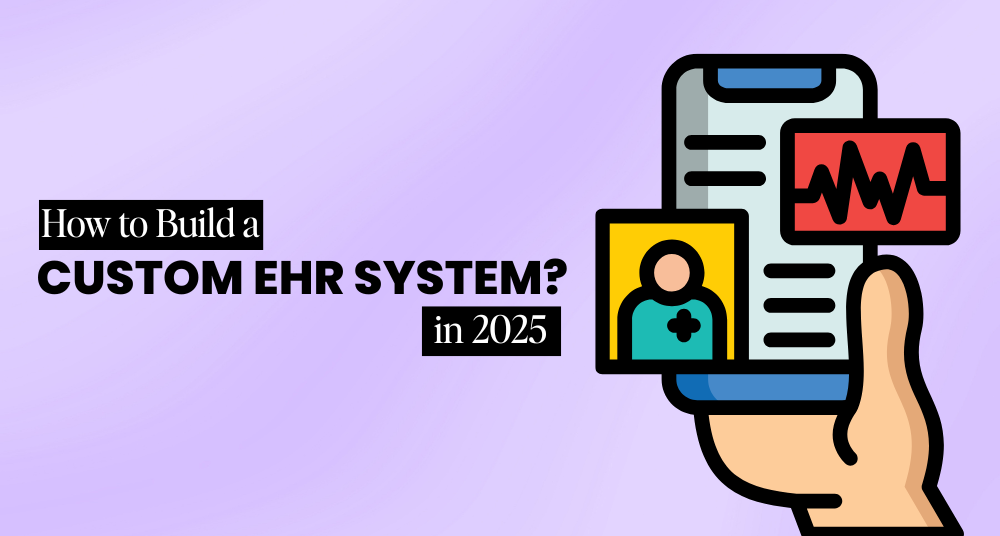In today’s fast-paced healthcare environment, technology is a game-changer for patient care, data management, and operational efficiency. One of the key innovations driving these changes is the Electronic Health Record (EHR) system. As healthcare organizations move away from paper records, EHR systems offer a digital, real-time way to manage patient data, improving the quality and coordination of care.
Building a custom EHR system tailored to your healthcare facility’s needs can seem like a daunting task, but with the right approach, it can greatly enhance your operations. From improving patient outcomes to streamlining workflows, a well-designed EHR system can transform how your healthcare providers interact with and manage patient information.
In this guide, we’ll walk you through the essential steps to EHR System Development—from understanding the basics of EHR to designing, developing, and maintaining a system that fits the unique needs of your healthcare organization. Whether you’re looking to integrate with existing tools or build something entirely new, this guide will equip you with the knowledge to get started.
What is EHR?
An Electronic Healthcare System (EHR) is a digital version of patient record management. It includes essential information such as health history, prescriptions, diagnostic reports, immunizations, and treatment plans. EHR systems allow for real-time access to patient data across multiple healthcare providers, improving coordination and efficiency.
By replacing traditional paper records, EHRs enhance accuracy, reduce errors, and streamline patient care, making healthcare delivery more effective and secure.
EMR vs. EHR: Key Differences Explained
In modern healthcare, Electronic Medical Records (EMR) and Electronic Health Records (EHR) are often confused, but they serve different functions. While both store patient data digitally, EMRs are limited to a single healthcare facility, whereas EHRs are interoperable across multiple providers.
| Feature | EMR | EHR |
| Scope | Used within one healthcare provider | Shared across multiple providers |
| Data Sharing | Limited, requires manual transfer | Real-time access across systems |
| Access | Internal use only | Authorized access for multiple providers |
| Patient Engagement | No direct patient access | Patients can view records via portals |
| Ideal for | Small clinics, individual practices | Hospitals, multi-specialty providers, healthcare networks |
EHR System Development in 2025: Key Steps and Best Practices
Understanding the Need for EHR System Development
Before starting, it’s crucial to define the purpose and scope of your EHR system. Modern EHR system development aims to:
- Improve patient record management and accessibility.
- Ensure seamless data exchange between healthcare providers.
- Enhance security and compliance with laws like HIPAA and GDPR.
- Integrate AI-driven analytics for better healthcare insights.
- Identifying these needs helps in designing a scalable and future-proof system.
Defining Core Features of the EHR System
A well-structured EHR system includes:
- Patient Record Management – Digital storage of medical history, prescriptions, and treatment plans.
- Interoperability – Integration with hospitals, pharmacies, and labs for real-time data exchange.
- Appointment Scheduling – Streamlined booking and reminders for doctors and patients.
- E-Prescriptions – Automated medication tracking and alerts.
- Data Security & Compliance – Encryption, multi-factor authentication, and regulatory compliance.
- AI & Analytics – Predictive health analysis for improved patient care.
Selecting the right EHR system features ensures better usability and efficiency.
Choosing the Right Technology Stack
Successful EHR System Development depends on selecting the right technology stack. In 2025, healthcare software development commonly includes:
Backend: Python (Django), Node.js, or Java.
Frontend: React.js, Angular, or Vue.js.
Database: PostgreSQL, MongoDB, or Firebase for secure data storage.
Cloud Hosting: AWS, Google Cloud, or Microsoft Azure for scalability.
Security Measures: Blockchain for secure transactions and AI-driven fraud detection.
A well-integrated tech stack enhances performance and security.
Ensuring Compliance with Healthcare Regulations
Compliance is critical in EHR System Development to protect patient data. Key standards include:
- HIPAA (USA): Ensures patient data privacy and security.
- GDPR (Europe): Regulates the handling of personal health data.
- FHIR (Fast Healthcare Interoperability Resources): Standard for secure data exchange.
Adhering to these regulations prevents legal issues and builds trust among users.
Implementing Interoperability for Seamless Integration
An efficient EHR system must connect with other healthcare software, including:
- Pharmacy Management Systems – For e-prescriptions and medication tracking.
- Laboratory Information Systems – For automated lab test reporting.
- Health Insurance Portals – For easy claims and billing management.
- Wearable Device Integration – Syncing with smartwatches and fitness trackers for real-time health monitoring.
Using FHIR and HL7 standards ensures seamless communication between different systems.
Developing a User-Friendly Interface
The success of an EHR system depends on usability. The interface should be:
- Easy to navigate for doctors, nurses, and patients.
- Mobile-friendly for access on smartphones and tablets.
- Customizable dashboards for different users.
- Voice and AI assistance for quick data entry and retrieval.
A well-designed UI improves efficiency and user adoption.
Testing, Deployment, and Continuous Monitoring
Before launching, the EHR system must go through rigorous testing:
- Security Testing: Protects against cyber threats and unauthorized access.
- Performance Testing: Ensures fast loading times and system reliability.
- Integration Testing: Checks interoperability with third-party software.
- Usability Testing: Ensures doctors and patients find it easy to use.
After deployment, regular updates and AI-driven monitoring help maintain security and efficiency.
Future-Proofing Your EHR System
Healthcare technology is evolving, and EHR System Development in 2025 must adapt to:
- AI & Machine Learning – Predictive analytics for early disease detection.
- Blockchain Integration – Enhanced data security and patient control over medical records.
- 5G Connectivity – Faster data transfer and improved telemedicine services.
- Augmented Reality (AR) & Virtual Reality (VR) – Training doctors and assisting in surgeries.
Why EHR System Development is a Smart Investment for Healthcare Providers
Investing in EHR system development offers healthcare providers numerous benefits, including enhanced patient care, streamlined operations, and improved data accuracy. By transitioning from paper-based records to digital systems, healthcare providers can improve accessibility, reduce errors, and ensure compliance with regulations like HIPAA and GDPR. EHR systems also enable seamless data sharing between providers, fostering better coordination and faster decision-making. Furthermore, EHRs increase operational efficiency, reduce administrative costs, and enhance patient engagement through online portals.
Top 10 Must Try EHR Software for 2025

- eClinicalWorks
- Cerner
- Allscripts
- Epic
- Meditech
- SmartClinix
- NextGen Healthcare
- Athenahealth
- Veradigm EHR
- PrognoCIS
Summing Up
In conclusion, building a custom EHR system tailored to your healthcare facility’s specific needs is a strategic investment that can significantly improve patient care, data management, and operational efficiency. By following the key steps outlined in this guide—such as selecting the right technology stack, ensuring compliance, and prioritizing interoperability—healthcare providers can develop a system that enhances workflow, reduces errors, and ensures data security. With the future of healthcare technology leaning towards AI, blockchain, and real-time data access, investing in a robust EHR system today sets the foundation for long-term success and seamless patient care.






What do you think?
It is nice to know your opinion. Leave a comment.